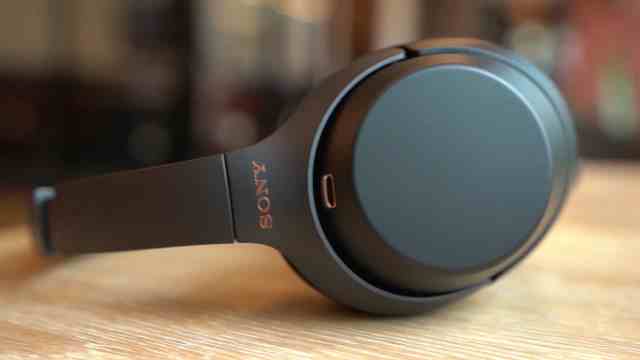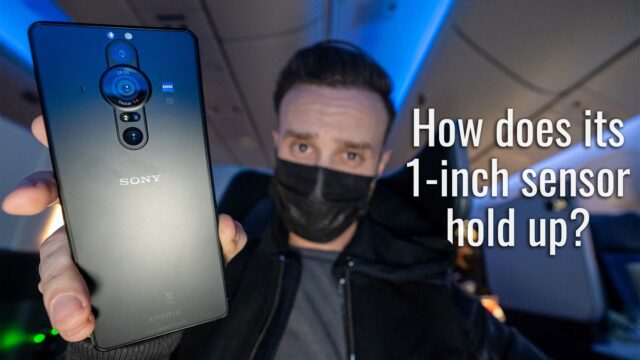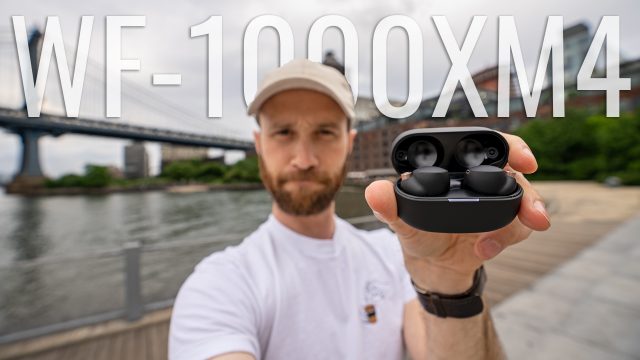Sony 1000XM3 Complete Walkthrough: Sony’s Newest Noise Cancelling Headphones
Sony just released their new noise-canceling headphones the 1000XM3 (aka the 1000x Mark 3). Since they were kind enough to send me a pair to test out as well as explain some of the differences between the 1000XM2 and 1000XM3, I figured we should try and do a complete walkthrough on them as is the usual on this channel.
If you aren’t familiar a complete walkthrough on my channel is where I try to go through every feature I can on a new device so that you guys are better informed should you be looking to buy one?
With that said, there’s a lot to go through, as usual, so let’s get started with the design.
Design
The headphones are made out of a metallic material, and in this black color that I have, they have little accents of copper that I think look awesome.
They also added a better cushion at the top of the headphones compared to the last model for more comfort as well as reduced the gap between the bar and your head which was apparently a complaint about the last ones and make them look a lot less awkward.
The headphone cups are now a lot smoother compared to the 1000XM2’s from last year. Sony said this is to help with the touch sensitivity on the outside of the right cup that is used as a control. I’ve been using them for a bit now and, even though I’ve not had extensive time with the last model the touch sensitivity is great so going to go with that was a good choice.
Speaking of, you can swipe up and down on the outside of the right cup to control volume, swipe forward and back to change tracks, double tap to pause and play, and tap and hold to get Google Assistant or Siri (depending if you’re paired to an iPhone or Android phone, of course).
Since they are noise-canceling headphones they also added a feature I started to love while using them, which is the ability to put your palm over the right ear cup and have it use the built-in microphones to allow in ambient sound while lowering the music volume so you can hear and respond to people without having to take off the headphones. (Worked super well on the plane for whenever the flight attendant would come by).
Speaking of, it seems that these headphones (and most noise-canceling ones for that matter) are designed with airplanes in mind since they know that most people are using them to drown out screaming kids and zone out on long flights. Because that Sony actually installed a barometer in them so they can recognize when they are on a plane on not and then it will actually adjust the noise-canceling algorithm to account for the lower air density while flying.
Under the left cup, we have our power button and a button to adjust the noise canceling levels between three settings.
Under the right cup, we have our USB-C charging port that supports fast charging over USB-C that can supposedly give the headphones 5 hours of use in just 15 mins of charging.
The battery in here is supposed to last about 20 hours on a charge and, even though I didn’t get a chance to test that properly, I can confirm they definitely last a long time.
Speaking of traveling, they fold up nicely into their carrying case that now doesn’t just house the headphones but also has a pot for the USB cable to charge it with, a 3.5mm audio cable if you don’t want to use Bluetooth, and even a converter to have it go from single 3.5mm headphone jack to dual jacks which are required on some international flights to listen to built-in entertainment system.
Performance
Now, how do they sound and how well does the noise-canceling work, right?
Well, to test that out, here we are in a noisy environment. I’ve put my microphone I use to do these videos inside the right ear cup and put them on so you guys can hear what I’m hearing and I also wanted to see how they did in a phone call since it’s something else that Sony mentioned they improved on the 1000XM3 vs 1000XM2. Now, it, of course, sounds great to me wearing the headphones, but how does it sound to someone listening to me?
So I had a friend call me while wearing the headphones and put my microphone in my ear while using the phone not connected to the headphones (#science) and here is how he sounded.
Check out the video for both of the performance tests to hear for yourself.
Conclusion
There we go. It seems to me like Sony really took what users were complaining about with the 100XM2’s and made a point to just fix each one on these.
The new Sony 1000XM3 headphones are available now for $349.99. And while that sounds like a lot, it’s exactly the same as the super-popular Bose QC35’s that seem to be the go-to for noise-canceling headphones so I’d say considering the extra features and frankly better sound quality as far as I can tell, that’s pretty competitive. At least to the point where I would at least add these guys to your short list of options if you were looking at the QC35’s at all.
Let me know what you guys think! You can check out the headphones here if you want more info.


















